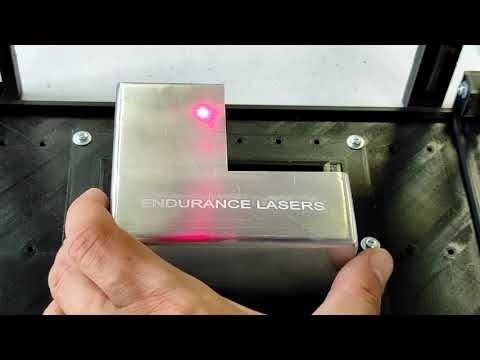Metal Laser Engraving and Cutting
Laser engraving and laser cutting stand as some of the most captivating innovations ever conceived. This technology offers a multitude of potential applications.
Equipped with the best metal laser engraver and cutter, you have the power to infuse your metalwork with distinctive flair, whether in the form of text or intricate images. All done with little effort and impeccable precision.
Before discussing the world of metal laser engraving and cutting, let’s first understand what it entails.
Table of Contents
What is Laser Engraving
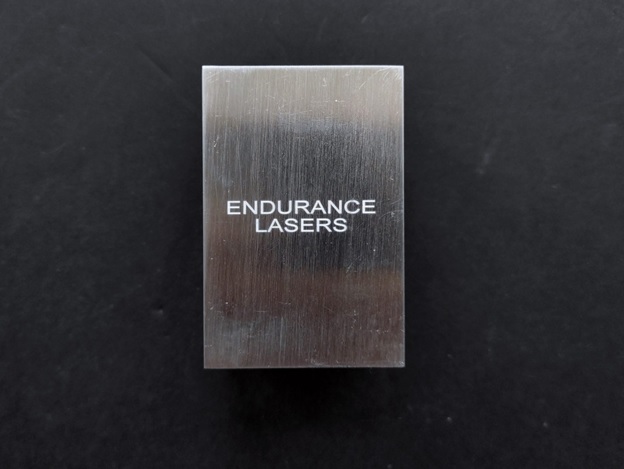
Several years ago, men used to mark on different materials and engrave on them either for artistry, traceability, or even personalization and this has been improved further in this current age and we now have improved tools that make this work more efficient and faster.
A laser engrave works by sublimating the surface of the material in order to create deep surfaces or markings that are permanent.
With a laser engraver, you can engrave text, images, and even logs on metal, wood, stone, textiles and many other varieties of materials with much ease and get precise results.
In this article, you will get to know how laser engraving works and how you can choose the appropriate metal laser engraver for your next project.
But before that, you can watch the short video below demonstrating how to engrave on stainless steel using a 15 Watt Endurance laser.
What is Metal Laser Engraving? And How Does it Work?
Metal laser engraving is the process by which a part of a metal is vaporized from its surface after a hot plasma is created through the heating of the metal by high energy pulse rates. The plasma created later vaporizes and hence leaving an empty surface
Metal laser engraving is useful in marking images, texts, 2D codes, and many other things on metal. This technology is very useful in many industries like in jewelry, automotive, aeronautics, and it’s used by hobbyists too to engrave their items.
It’s of importance also to note that metals require a higher amount of temperatures in order to melt and high energy to vaporize.
Hence for engraving to take place, your laser should be able to emit a good amount of energy in a single pulse mode.
Most metals have a thermal conductivity of around 1000 C+ and this explains why it requires high energy and higher power for conductivity.
So to achieve your desired results easily you need a good laser head that’s more stable to engrave on metals. A good example is the Endurance 4 Watt DPSS laser module
Difference Between Laser Engraving and Laser Etching
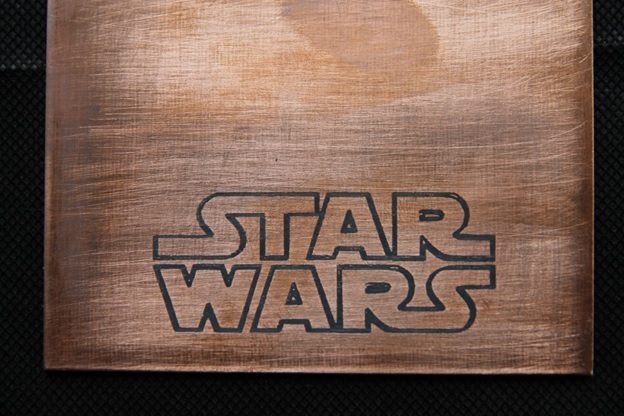
Laser engraving and laser etching are two similar technologies. But the main difference between them is that laser engraving works by removing the material in order to create deep and permanent marks. Laser etching on the hand works by melting the surface in order to generate raised marks.
Laser etching heats the surface of the material and it expands hence creating a texture. Unlike laser engraving, laser etching creates white and black marks on the surface which are permanent. Laser etching is usually useful if the material is made of metal and not stainless steel. Also if you need a faster process, etching is the best as it’s faster than laser engraving.
When Laser Engraving is Best than Laser Etching
Metal laser engraving is important when the part to be engraved is either made of steel or aluminium. FastMetals has sheet stock for sale in both steel and aluminum so you can purchase a small amount of either and make sure you’re getting the effect you want.
If you would like marks that are permanent and those that don’t fade easily, laser engraving is the best option. If you would like marks that are permanent and those that don’t fade easily, laser engraving is the best option. Laser engraving ensures there is maximum durability.
Having looked at that, you might be wondering which is the best laser engraver for your specific task and where you can get a good laser engraver?
Choosing the Best Laser Engraver For Your Project
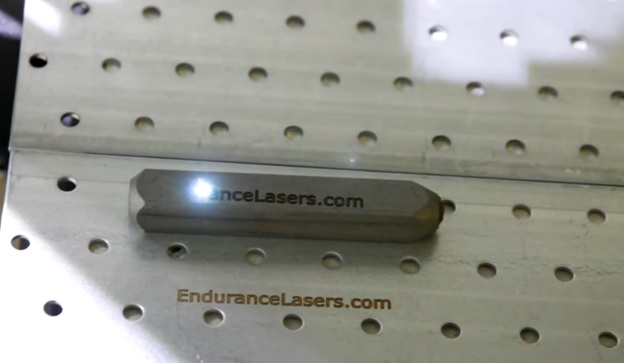
To ensure the success of your project, you need to choose the most appropriate laser machine for your task. The factors below will guide you in selecting the best laser engraver for your task:
- The type of your material
- The size and geometry of the material
- Production process
Different materials usually react differently in different wavelengths. And thus different materials being used have different requirements of lasers. There are usually two types of laser systems: CO2 or fiber laser systems. Each of these laser systems usually produce different wavelengths.
Fiber laser systems are much better when it comes to metal engraving and marking. They produce a light wavelength of about 1064nm and most metals react well at this wavelength.
CO2 laser system on the other hand are ideal for engraving organic materials. They have a laser source that includes gas and they produce light on wavelengths that ranges from 9000-12, 000nm. Majority of the organic materials usually react well to this wavelength range. So if you would like to engrave on metals, you should avoid this type of laser system as metals react poorly with that average wavelength. You can learn more on each of these types of lasers on the endurance website.
What is Laser Cutting?
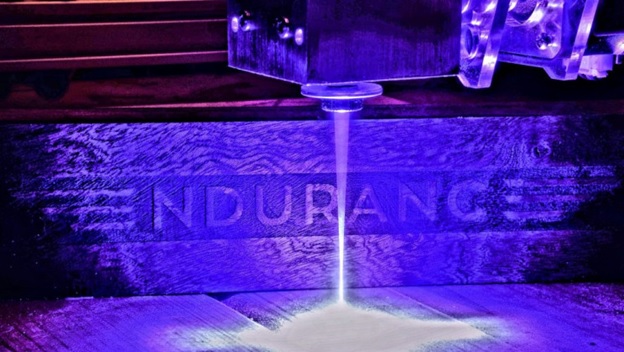
In laser cutting, geometries are cut by a laser beam. Similar to laser engraving, different materials can be cut. With laser cutting, a focused thin beam is used to cut and pierce through the materials in order to generate geometries and patterns as controlled. It’s useful in manufacturing and prototyping.
With laser cutting, a designer can 3D design a model in a 3D modeling software and then it’s sent to a laser cutter for cutting.
One can either use a 2D design software for preparing their files like Inkscape, Adobe Illustrator, CorelDRAW, or a 3D design software like AutoCAD, SelfCAD, Fusion 360, and many others.
A few years ago, CO2 laser systems were the ones that were mostly being used in the laser cutting industry.
But with the advancement in technology, solid-state and fiber laser technologies are now being used as they require low operational costs and they have increased cutting speeds.
Cutting metals is one of the most common uses of laser cutting. It’s the most recommended method as it provides a smooth and clean finish.
Metal components like the car bodies, engine frames, panel beams, or even mobile phone cases can easily be cut with laser machines. Below are some of the other advantages of metal laser cutting:
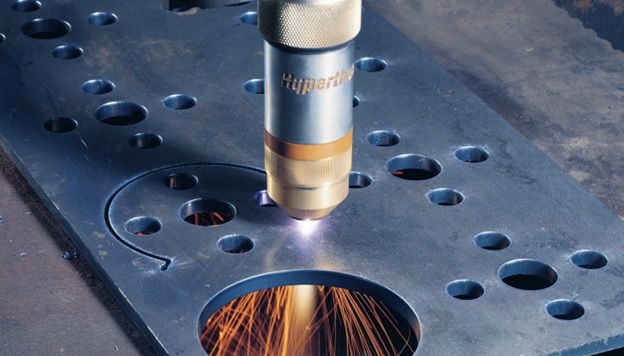
Advantages of Metal Laser Cutting
- No post cutting finishing is required. Metal laser cutting creates a high quality cut.
- There is flexibility. Complex and simple parts can be worked on
- It’s quick
- Most metals can also be cut
- Easier workholding and reduced contamination
- Allows cutting of metals that otherwise are hard to do when other methods are used.
- There is a high level of accuracy and precision.
Because different metals require different energy levels in order to cut, you need to keep in mind the power of the laser that you are buying to ensure that you order the one that has the capability to handle your task.
It’s also of importance to know that if you don’t own a CNC machine and maybe you have your own 3D printer, you can easily turn it into a CNC machine by buying a laser. You can watch the video below to learn how you can turn your 3D printer into a CNC machine.
But if you don’t own any of those tools, after preparing your files you can order using the many available online services.

